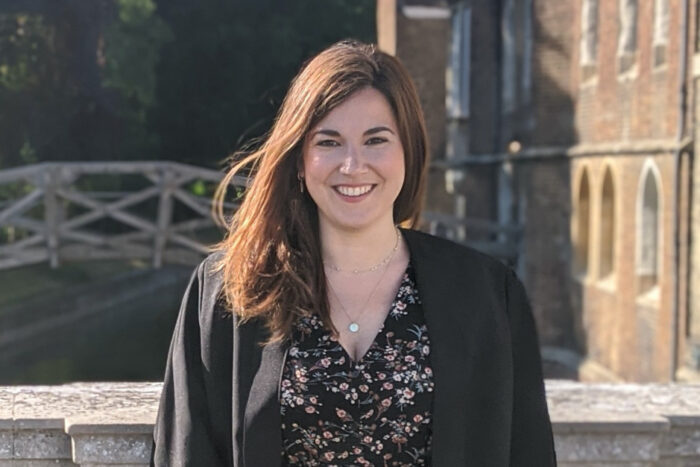
Laura Pellegrini, a postdoc in Madeline Lancaster’s group in the LMB’s Cell Biology Division, has been awarded the 2020 3Rs Prize for her paper ‘Human CNS barrier-forming organoids with cerebrospinal fluid production’, which was published in Science last July. The prize is awarded by the National Centre for Replacement, Refinement and Reduction of Animals in Research (NC3Rs), sponsored by GSK, and aims to recognise an outstanding original research paper published within the last three years that could have a monumental impact on the replacement, reduction or refinement of the use of animals in research.
The prize was announced on Tuesday 8th June at a virtual event featuring speeches by Professor Kevin Shakesheff (Chair of the NC3Rs Board), Nick McMahon (representing GSK), and Laura who spoke about her paper. Laura will receive a prize grant to support her ongoing research.
She commented: ‘The 3Rs prize combined with the excellent LMB scientific atmosphere, will allow me to explore new directions and to specifically investigate the role of the choroid plexus in protein uptake from the cerebrospinal fluid in early stages of neurodegeneration.’
In Laura’s innovative study, she helped to develop a new brain organoid with the ability to produce cerebrospinal fluid (CSF), a supportive fluid that surrounds the brain and is required for proper brain function. The CSF, and the tissue that produces and secretes it, known as the choroid plexus (ChP), are not well understood, due to the difficulty in accessing them in our brains, without any kind of contamination. In order to better study the ChP-CSF system, Laura built upon the group’s existing method for producing cerebral organoids, and used human stem cells to grow ChP organoids. These organoids behaved like the human ChP by forming a tight barrier that could prevent most substances within blood entering the brain and demonstrated the ability to develop CSF-filled compartments which were isolated from the surrounding media.
This ‘CSF-in-a-dish’ allowed the group to record changes in the secretion of CSF proteins over time, leading to the identification of specific cells which contribute to the fluid’s development and even the discovery of a previously unidentified cell type in the ChP: myoepithelial cells. The model also enabled them to study the barrier formed by it, in particular highlighting the potential value of the organoids in predicting the permeability of the ChP to novel drugs, which could be of great benefit to preclinical drug screening.
Since this initial work to develop the ChP organoid model, Laura has used this model, in collaboration with Anna Albecka-Moreau in Leo James’ group, to investigate the potential for SARS-CoV-2 to infect cells in our brain. Their findings could explain neurological symptoms that have been associated with COVID-19 as they found that the virus could infect ChP epithelial cells and weaken the barrier, potentially allowing entry of pathogens and immune cells and causing neuroinflammation.
The benefit of using organoids to study the human ChP and CSF cannot be overstated as the ChP is located in the inner layer of the meninges within the brain, so dissection and study is difficult and access to tissue is limited, especially during development. Therefore this organoid model provides an important alternative that can replace the use of animals for the study of ChP development. This model could also greatly reduce the use of animals as the volume of CSF produced by organoids is much greater than the amount that can be collected from mouse embryos. Importantly, the fluid collected is also more useful as it is free from any blood contaminants due to the lack of vasculature in the organoids.
With this achievement, Laura has become the third LMB member to win the 3Rs prize: in 2015 Madeline Lancaster shared the prize for her work in creating the 3D models of the embryonic brain from stem cells that Laura has now developed further. Last year, Cell Biology Group Leader Marta Shahbazi jointly received the 2019 3Rs prize to recognise her work in using 3D tissue cultures which mimic embryonic development.
Further References
Brain organoids with the potential to predict drug permeability
SARS-CoV-2 disrupts the brain barrier in human organoids
Madeline’s group page
National Centre for the Replacement, Refinement and Reduction of Animals in Research (NC3Rs)